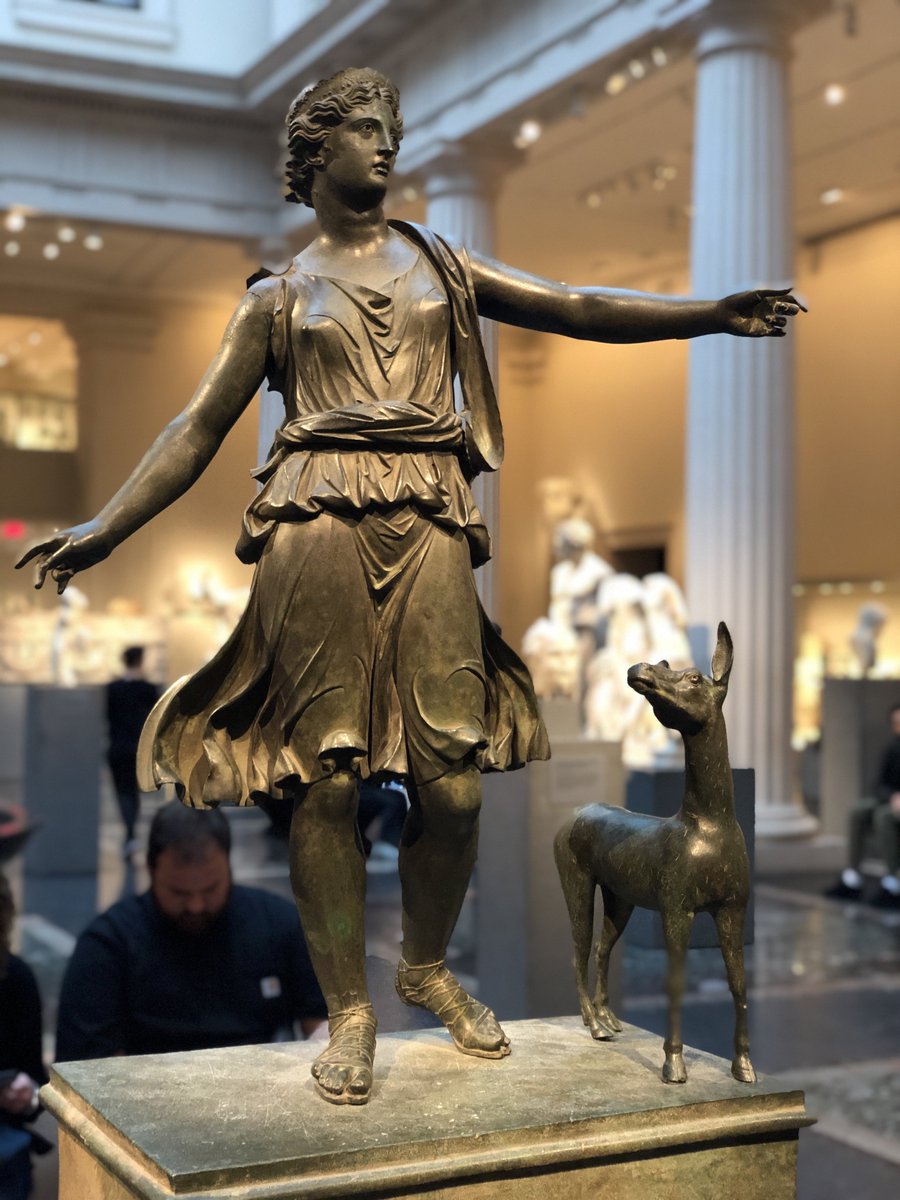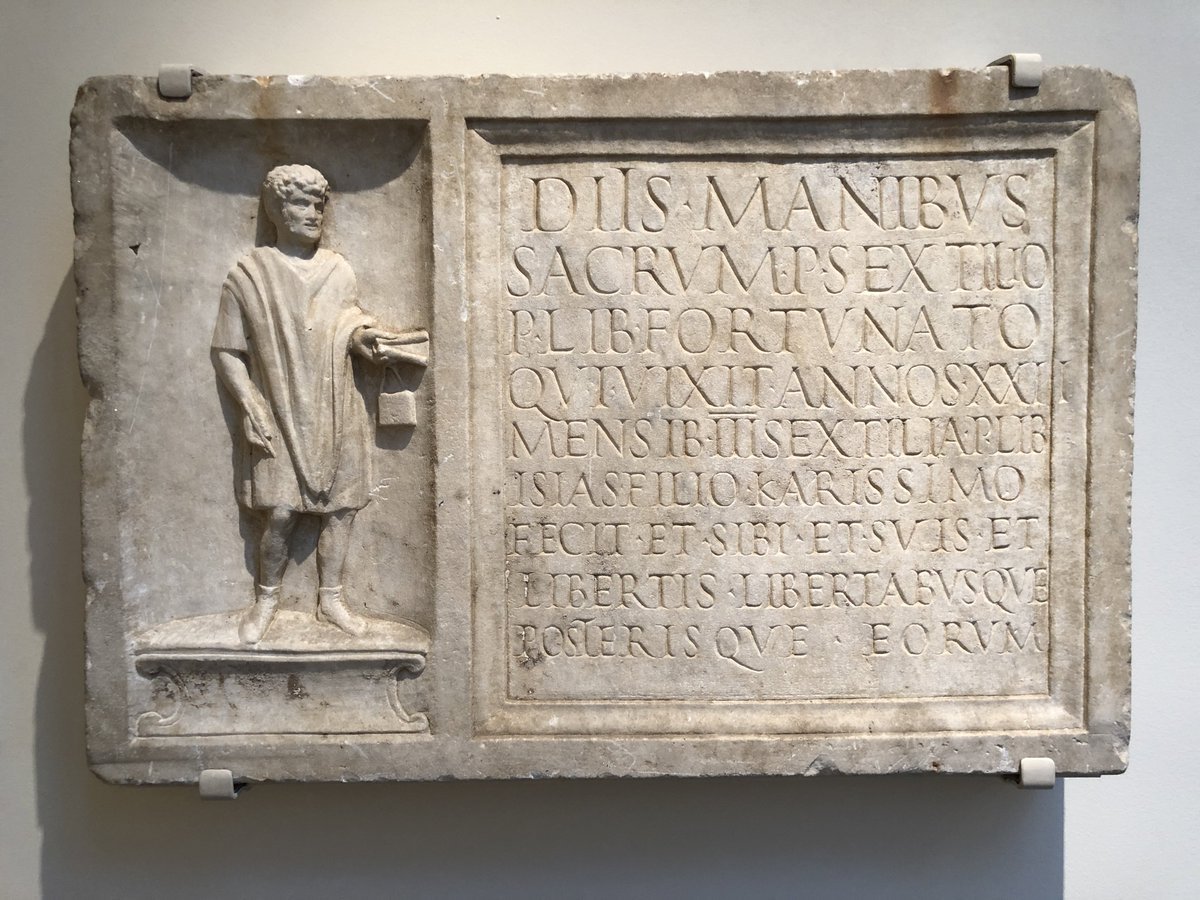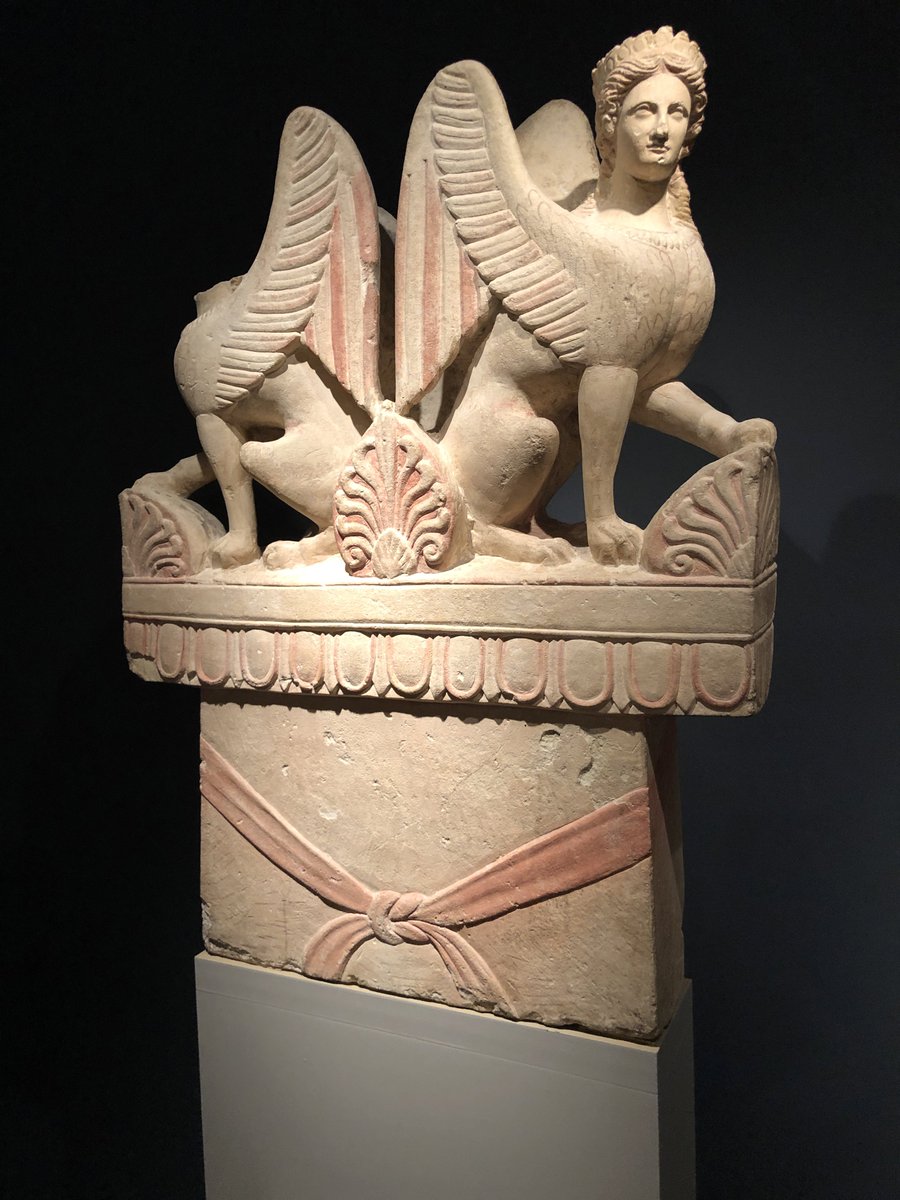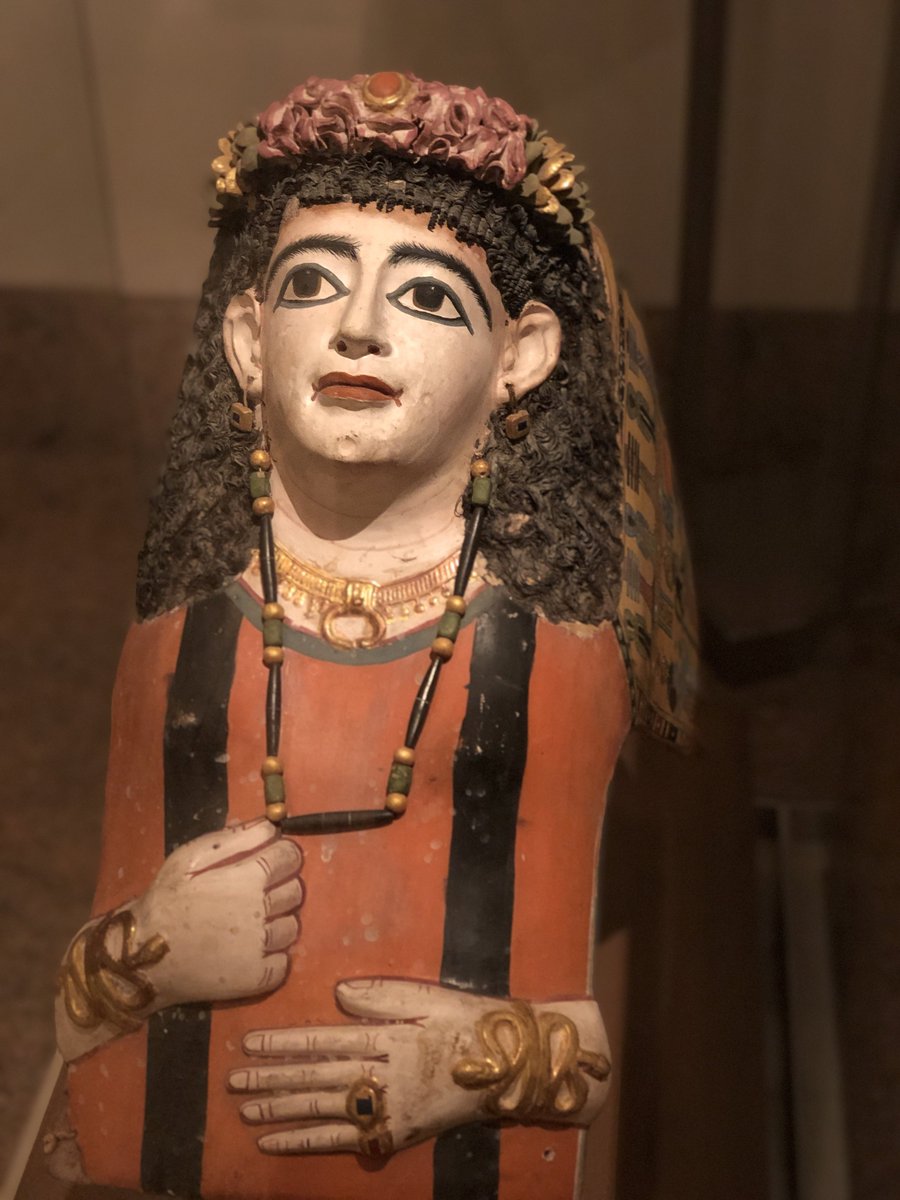Today is NYC Museums for #MuseumsUnlocked. Some selections from @metmuseum. A bronze statue of Artemis and a deer; a tombstone of Publius Sextilius Fortunatus; a polychrome funerary stele w/ two sphinxes; a mummy mask of a woman with real hair and jeweled garland. 1/
Statue of Artemis, Greek or Roman, ca. 1st c. BC - 1st c. AD. Marble funerary relief of P. Sextilius Fortunatus, Roman, Mid-Imperial, ca. D 120-150. Funerary stele (grave marker), Cypriot, late 5th, early 4th c. BC. Egyptian mummy mask, ca. AD 60-70. 2/
On the funerary relief, P. Sextilius Fortunatus, a freed slave, is holding a stylus and papyrus, indicating that he was educated and literate. His mother, also a freed slave, was probably of eastern origin, as inferred by her name. Next, the translation of the epitaph ... 3/
The epitaph of P. Sextilius Fortunatus& #39; relief reads, & #39;Sacred to the Spirits of the Dead, Sextilia Isaias, freedwoman of Publius, made [this] for her most beloved son, Publius Sextilius Fortunatus, freedman of Publius, who lived 22 years and 3 months ...& #39; 4/
& #39;... and for herself, and for her family, and for her freedmen and freedwomen, and for their descendants.& #39; This was obviously for a tomb in which they planned to bury not only members of their family, but also their own freed slaves. 5/
Man, I was really long-winded on that one, and the funerary relief should probably have had its own tweet. Amazing what you can learn from one simple object.

 Read on Twitter
Read on Twitter





